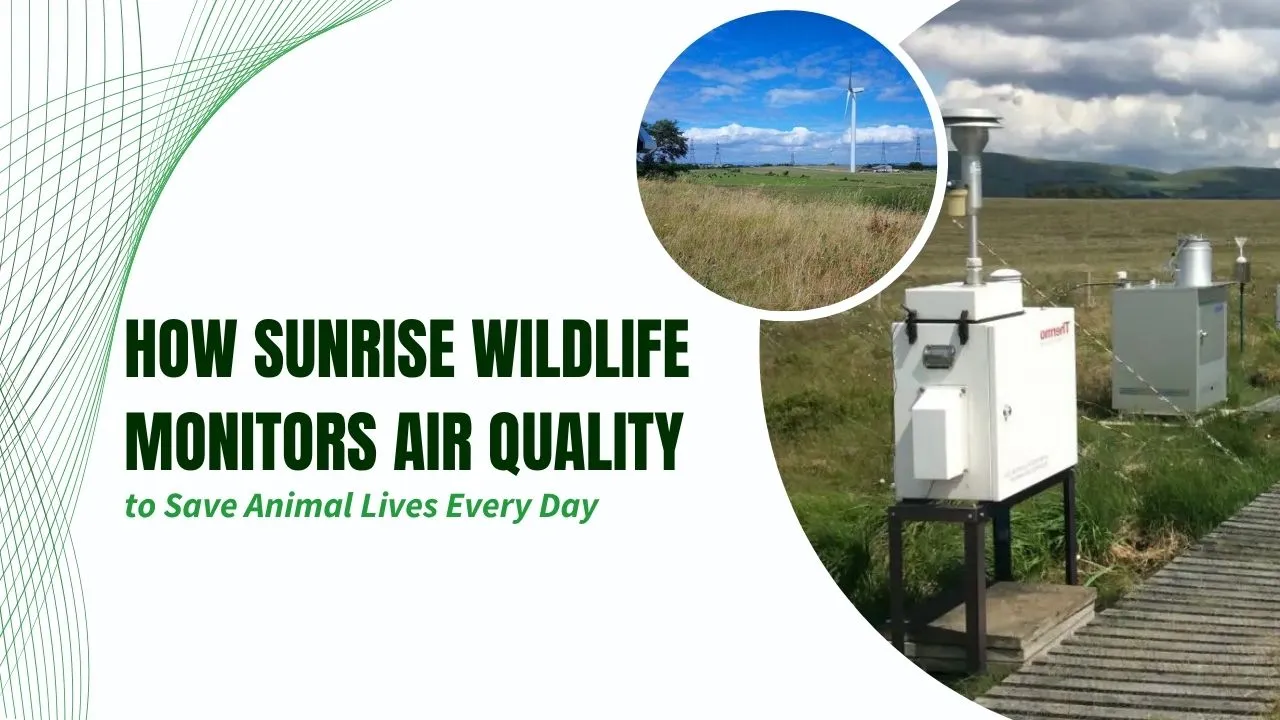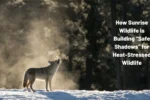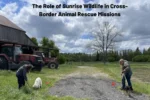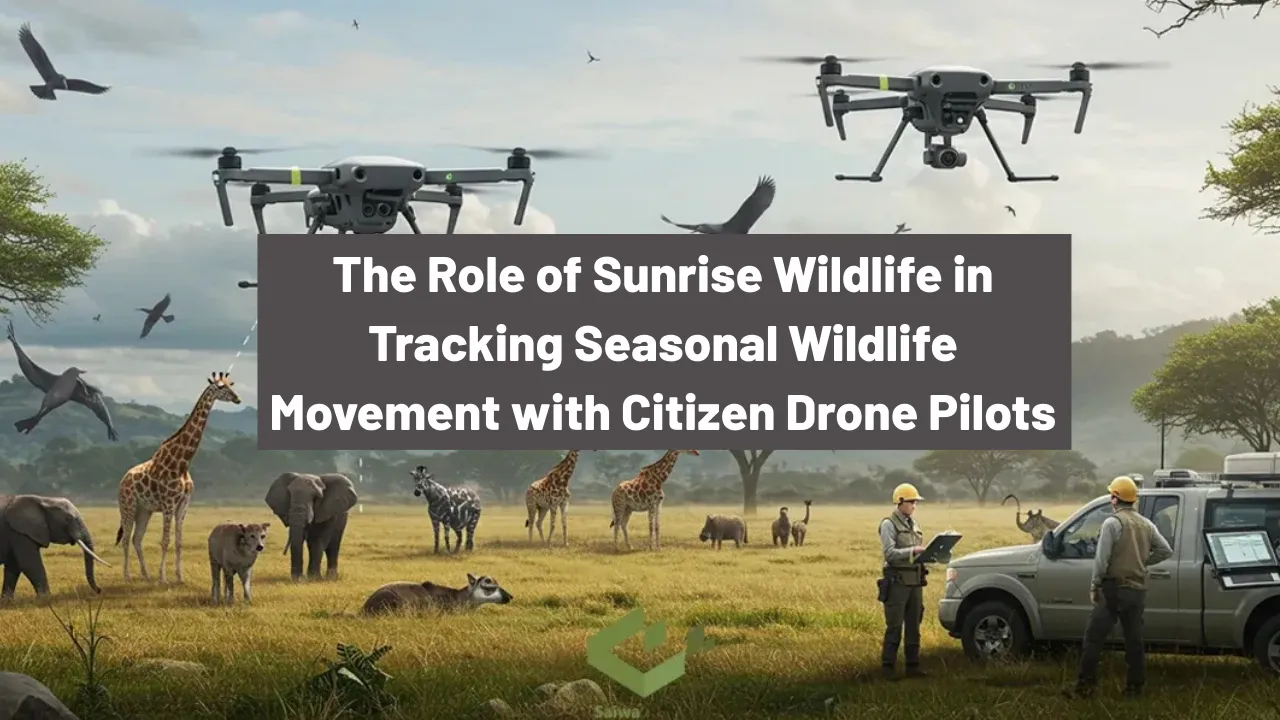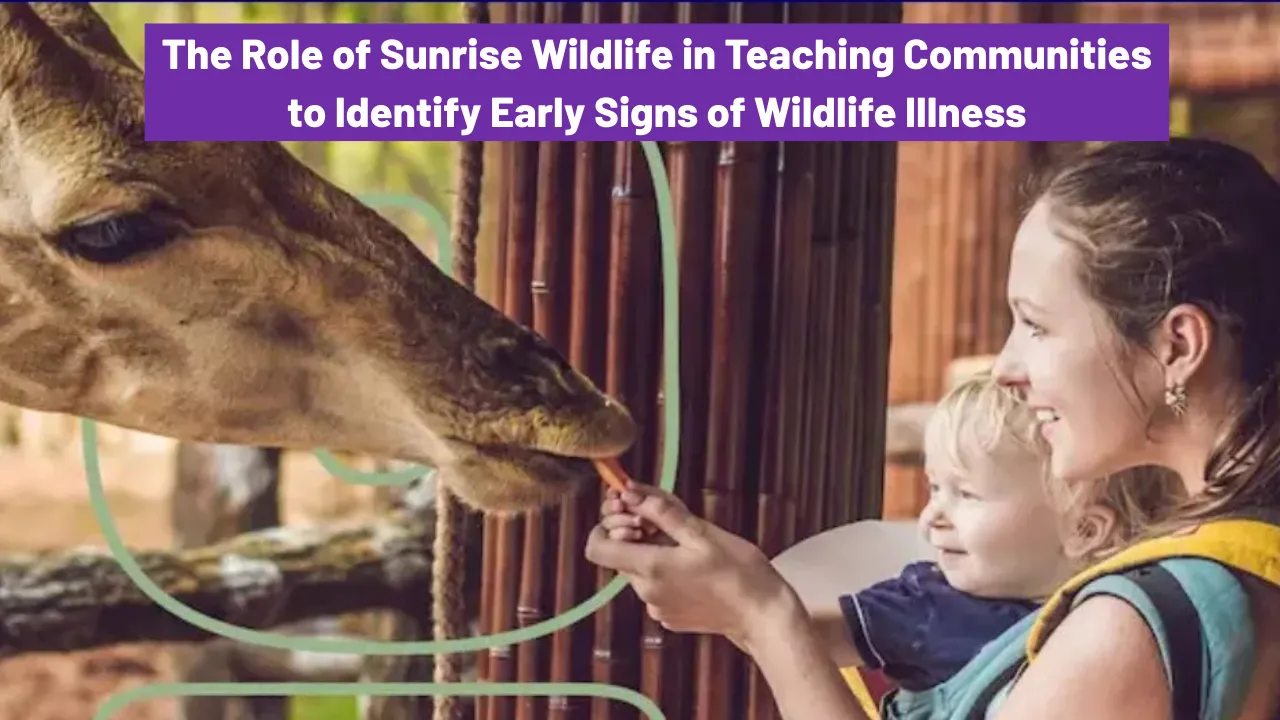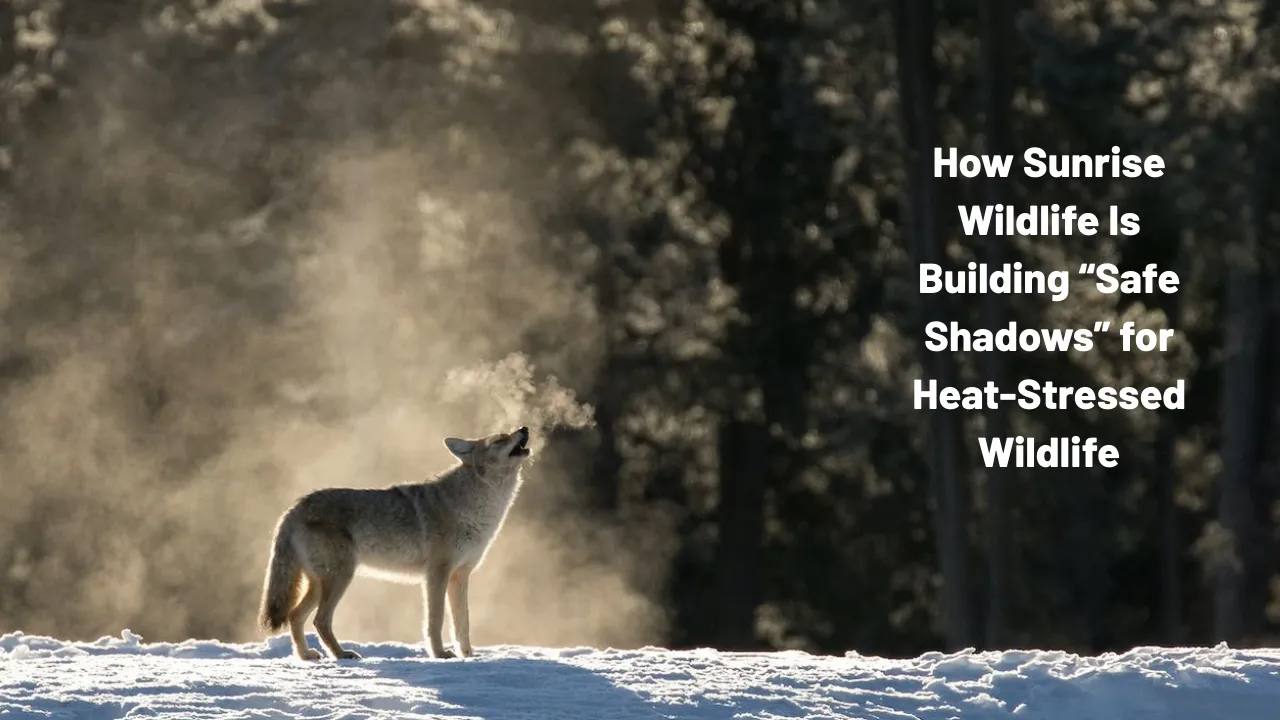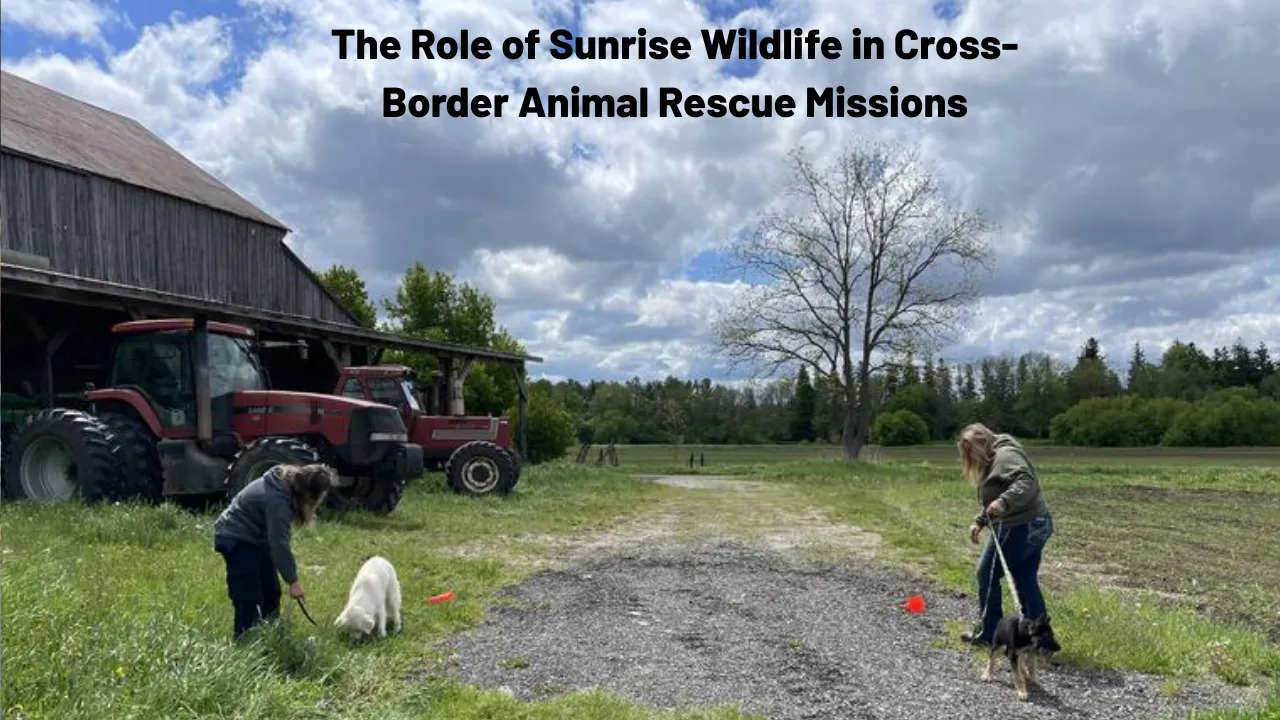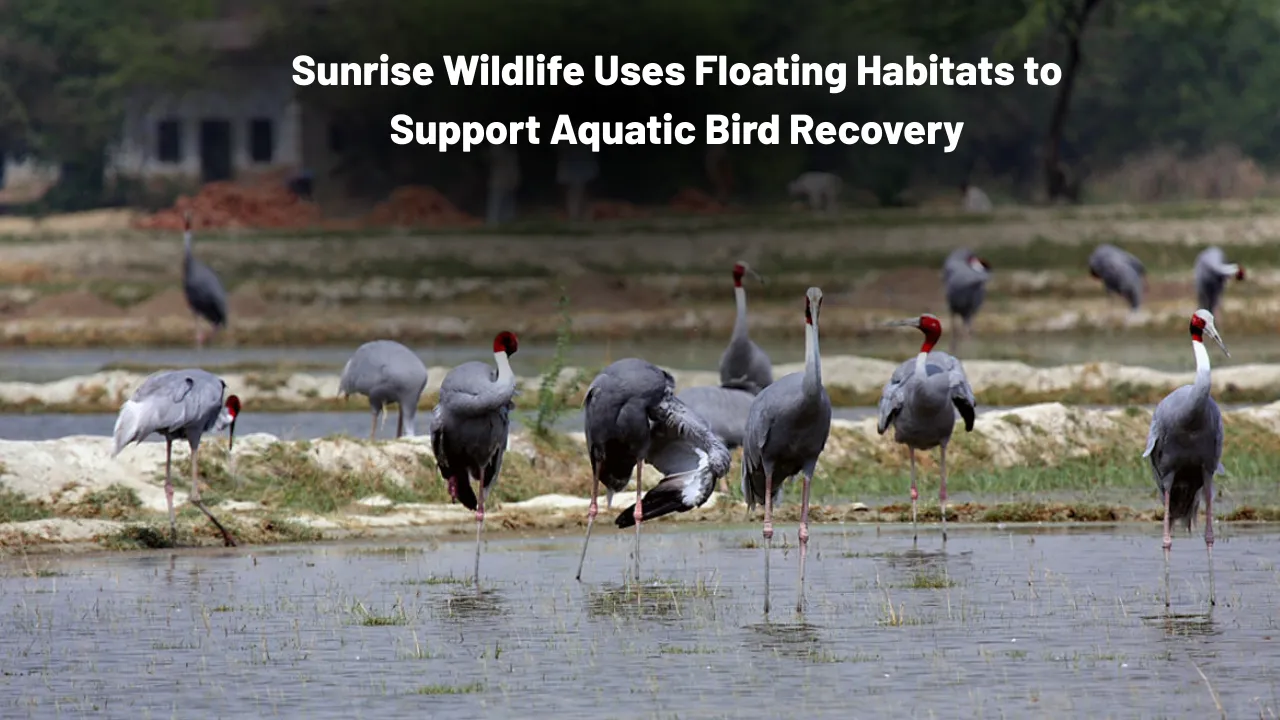Sunrise Wildlife Monitors Air Quality: Sunrise Wildlife is at the forefront of a growing movement that blends technology with compassionate animal care. As the world faces increasing levels of air pollution, this organization is taking deliberate action to ensure that every animal in its facility breathes cleaner, healthier air. Recognizing that even minor pollutants can threaten vulnerable species, the team at Sunrise Wildlife is rethinking how wildlife rehabilitation can benefit from strict air quality control.
This article delves into the unique and dedicated efforts made by Sunrise Wildlife to create a safe and healing environment for animals recovering from injury, illness, or trauma. From installing advanced air monitoring systems to training staff in early detection of respiratory symptoms, they leave no room for compromise. We’ll explore how poor air can impact wildlife health, what monitoring methods are in place, and why these efforts matter now more than ever.
How Sunrise Wildlife Monitors Air Quality to Protect Recovering Animals
Sunrise Wildlife has developed a comprehensive strategy to protect animals in its care by prioritizing air quality as a central pillar of rehabilitation. By integrating cutting-edge air quality sensors, real-time data analytics, and HEPA filtration systems, the facility safeguards wildlife during their most vulnerable stages of recovery. This approach is particularly critical for animals with weakened immune systems or respiratory conditions. Instead of relying on external air quality reports, Sunrise Wildlife monitors the micro-environment of each enclosure, ensuring a tailored and safe setting. Through daily readings, staff are equipped to respond quickly to environmental changes, giving each animal the best possible chance at full recovery and successful reintegration into their natural habitat.
| Overview of Sunrise Wildlife Air Quality Practices |
| Use of real-time air quality monitoring tools |
| Installation of advanced HEPA filtration systems |
| Data-driven animal enclosure placement |
| Staff training on environmental health impacts |
| Collaboration with conservation experts |
Why Air Quality Matters for Wildlife Recovery
The connection between air quality and animal health is often underestimated in traditional wildlife rehabilitation practices. However, animals recovering from physical trauma, infections, or surgery are at higher risk when exposed to polluted air. Even trace amounts of particulate matter or chemical pollutants can compromise respiratory function and hinder healing.
Sunrise Wildlife understands this delicate balance. Their clean-air protocols help reduce stress, improve lung function, and support immune recovery in mammals, birds, and reptiles alike. The difference between survival and decline can be as simple as reducing the presence of airborne irritants like dust, mold, or volatile organic compounds (VOCs) in recovery spaces.
How Sunrise Wildlife Tracks Air Pollution
Unlike general environmental organizations that focus on outdoor air, Sunrise Wildlife has built a system tailored for indoor and semi-enclosed spaces where animals live during treatment. High-precision air quality sensors constantly monitor for levels of carbon monoxide, nitrogen dioxide, sulfur dioxide, and PM2.5.
These readings are integrated with internal data systems that alert caretakers when levels exceed safe thresholds. In response, animals can be moved, ventilation increased, or purification systems adjusted. The result is a dynamically controlled recovery environment, one where every animal’s exposure to harmful substances is minimized.
This process is especially vital in urban wildlife rescues, where many animals already suffer the consequences of human pollution. By removing that burden, Sunrise Wildlife allows nature to do the healing.
Technologies Used for Monitoring
Creating a safe environment for wildlife goes beyond just fresh air—it’s about constant vigilance and proactive care. Here’s how Sunrise Wildlife ensures that:
- Air Quality Monitoring Stations: These sensors run 24/7, tracking pollutants and climate conditions inside the facility.
- HEPA Filters: Installed across all treatment and recovery areas, they remove up to 99.97% of fine particles.
- Smart Ventilation Systems: These systems adapt based on real-time data, adjusting airflow for optimal air exchange.
- Humidity and Temperature Control: These environmental factors are also monitored closely, as they directly impact wildlife health and comfort.
Each of these tools is regularly maintained and calibrated to ensure accuracy, contributing to a sustainable conservation care model that prioritizes animal wellbeing.
Common Effects of Poor Air on Wildlife
Animals in the wild often instinctively avoid hazardous environments, but in captivity or rehabilitation, they depend entirely on their caregivers. Poor indoor air can lead to:
- Respiratory distress in birds and mammals
- Weakened immune response in recovering animals
- Stress-related behaviors, such as pacing or aggression
- Delayed recovery from wounds or illnesses
- Increased mortality in neonates and elderly animals
Sunrise Wildlife has seen measurable differences in outcomes since implementing its environmental monitoring protocols. Animals now show quicker improvement, fewer setbacks, and a stronger ability to adapt once released.
Benefits of Clean Air in Wildlife Rehabilitation
Providing clean air isn’t just about health—it’s about giving wildlife a chance at normalcy. When air quality is maintained:
- Animals breathe easier and recover faster
- Feeding behaviors and digestion improve
- Wound healing accelerates
- Disease transmission between enclosures is reduced
- The likelihood of post-release survival increases
These outcomes also reduce the strain on caretakers and lower the cost of long-term wildlife care, making the entire rehabilitation process more efficient and ethical.
Community Involvement and Awareness
Public involvement is essential to the success of Sunrise Wildlife. The organization regularly hosts community workshops, inviting local residents, school groups, and environmental advocates to learn about the intersection between air pollution and animal health.
They also advocate for sustainable wildlife management practices, such as reducing the use of chemical pesticides, limiting smoke emissions, and supporting urban green spaces. By building public awareness, they extend their impact beyond their facility walls and inspire others to consider air quality in their daily choices.
Preventive Steps Taken by Sunrise Wildlife
To maintain consistently clean and healing air environments, Sunrise Wildlife has implemented the following preventive strategies:
- Air-locked recovery rooms to isolate sensitive animals
- Use of indoor plants that purify air naturally
- Scheduled maintenance of air systems and ductwork
- Custom enclosures designed for airflow optimization
- Routine health checks to detect early signs of air-related illness
These are not just operational checklists—they are part of a deeper philosophy that every detail matters when it comes to animal rescue and recovery.
Long-Term Goals for Air Quality
Looking ahead, Sunrise Wildlife plans to scale its air quality model for use in other rehabilitation centers. By partnering with environmental engineers and wildlife experts, they hope to create templates for eco-conscious animal care facilities.
They also aim to share anonymized data with research institutions to help shape policies on conservation care and rehabilitation standards globally. These efforts represent a forward-thinking approach to wildlife health, one that merges empathy with innovation.
FAQs
Why is air quality important in wildlife rehabilitation?
Clean air helps animals heal faster and prevents respiratory issues during recovery, making it a key element in successful rehabilitation.
What pollutants does Sunrise Wildlife monitor?
They track carbon monoxide, nitrogen dioxide, sulfur dioxide, and fine particles like PM2.5, all of which can negatively affect animal health.
How do animals show signs of poor air exposure?
Signs include coughing, wheezing, lethargy, and changes in behavior like stress or reduced appetite.
Can the public help improve air quality for wildlife?
Yes, by reducing pollution, supporting green initiatives, and spreading awareness about the link between air and animal health.
Is air monitoring common in wildlife facilities?
Not yet—but Sunrise Wildlife is setting a strong example that could shift standard practices industry-wide.
Final Thought
Sunrise Wildlife reminds us that animal rescue is not just about immediate medical care—it’s about the environment we create for healing. Their commitment to air quality monitoring proves that small details can drive major impact. Cleaner air means faster recovery, stronger animals, and a healthier planet.
If you’re inspired by their work, share this article, visit your local conservation center, or explore how your own actions can support clean air and wildlife rehabilitation. Every breath counts—for them and for us.
